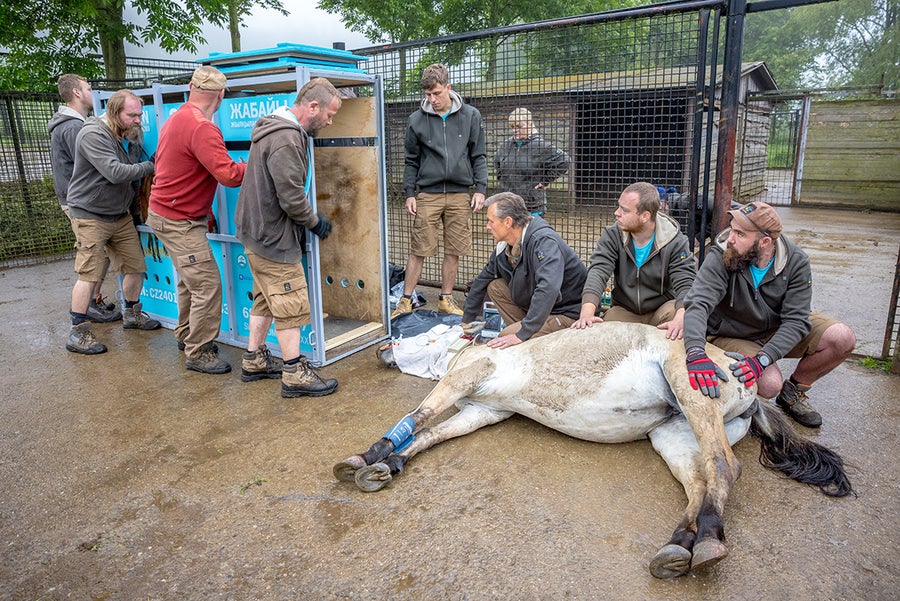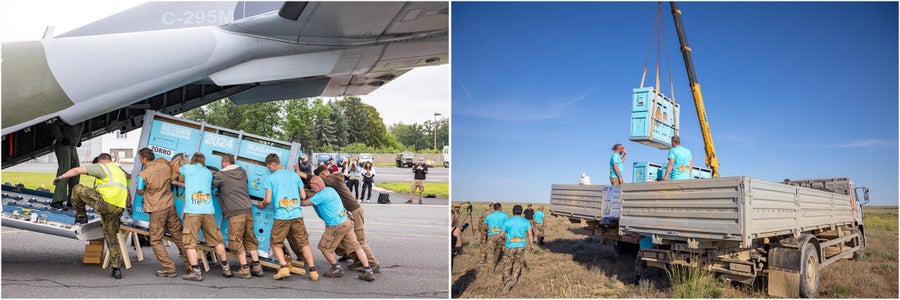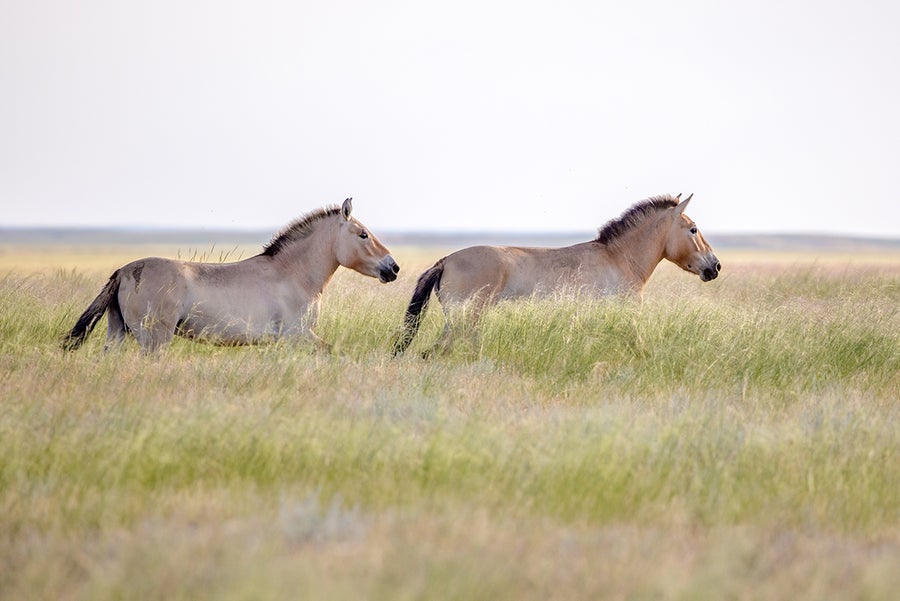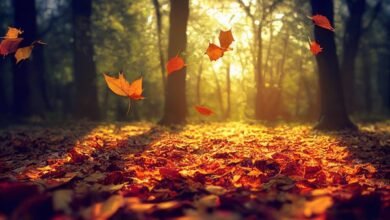Przewalski’s Horses Are Finally Returning to Their Natural Habitat

The newest equine additions to Kazakhstan’s “Golden Steppe” might seem, at first glance, to be unremarkable, with a donkeylike build and a mane that sticks straight up like a zebra’s. But these seven individuals are members of the last remaining species of wild horse: Przewalski’s (pronounced pshuh-val-ski’s) horse, known as kertagy or kerkulan in Kazakh.
Horses roam freely in many parts of the world, such as the Great Plains in the U.S., but these are feral animals, members of a domesticated species that now live in the wild. Przewalski’s horses are a different species entirely—they even have a different number of chromosomes—and this species doesn’t appear to have been domesticated by humans.
“They’re truly wild animals,” says Oliver Ryder, a conservation geneticist who works with Przewalski’s horses at the San Diego Zoo Wildlife Alliance. Once the animals were a crucial piece of the ecosystem in the steppes of Central Asia. But they began disappearing in the 1800s, and by the 1960s, humans and environmental changes had driven them to extinction in the wild. Fortunately, at least a dozen or so horses capable of reproducing survived in captivity, and with carefully managed breeding, the population has made a comeback. This June conservationists reintroduced seven of them to the Golden Steppe of Kazakhstan—the horses were flown to a reintroduction center on the steppe, where they are acclimating to life outside captivity under the watchful eye of conservationists.
On supporting science journalism
If you’re enjoying this article, consider supporting our award-winning journalism by subscribing. By purchasing a subscription you are helping to ensure the future of impactful stories about the discoveries and ideas shaping our world today.
Despite living for so long in captivity, Przewalski’s horses haven’t lost their wild streak. “We are not trying to tame them,” says Barbora Dobiášová, ungulate curator at Prague Zoo and head of the European breeding program. “If you enter an enclosure with Przewalski horse herd…, [the stallion] will always try to get between you and the mares” to defend them, she says. The animals need to be sedated in order for the zookeepers to so much as trim their hooves.
On the Golden Steppe, or Kazakhstan’s Altyn Dala State Nature Reserve (altyn dala means “golden steppe” in Kazakh), these horses are once again galloping and grazing, filling the hole they left in the ecosystem, explains Stephanie Ward of the Frankfurt Zoological Society. Ward serves as the international coordinator of the Altyn Dala Conservation Initiative, a conservation partnership with the government of Kazakhstan.
“If you go into the steppe, it’s like you’re in a sea of grass. And at first, it just all looks the same,” she says. But that sea is teeming with life. Birds build their nests in the brush, and burrowing animals tunnel beneath it. Large herbivores such as horses and antelope have historically kept this grass short, which prevented it from drying out and allowed other animals to access the ground beneath, Ward explains. Their dung fertilized the ground, and their grazing promoted carbon sequestration in the soil.
“Grasslands need to be grazed,” Ward says. By the 2000s, however, many of the steppe’s large herbivores were gone or critically endangered. That included not only the Przewalski’s horse but also a wild ass called the kulan and the saiga antelope. “The absence has caused this slow degradation of the ecosystem. The species of plant get fewer and fewer, and they get less and less resilient,” she says.
But the grazers are coming back, thanks to conservation efforts that go beyond the Przewalski’s horse. Kazakhstan’s saiga antelope, with their charming, trunklike nose, numbered only 21,000 in 2003. Today more than one million are spread across the nation. Just last year the International Union for Conservation of Nature changed their status from “critically endangered” to “near threatened.” Kulans have also been reintroduced periodically since 2017.

A sedated Przewalski’s horse is prepared for transport.
Now it’s Przewalski’s horses’ turn. Captive breeding programs have allowed their numbers to soar from as low as 30 to 40 individuals in the mid-20th century to about 2,500 today. About half of these horses now live in the wild, thanks to reintroductions in Mongolia, China and Russia starting in the 1980s. Kazakhstan, however, had experienced less luck—an attempted 2003 reintroduction to a national park was not successful. The animals also didn’t have the necessary legal protections in the country because they had been absent from the ecosystem for so long.
Przewalski’s horse was added to Kazakhstan’s list of protected species in 2021, paving the way for the wild horses’ return. In early June 2024 seven of the animals were flown in from the Prague Zoo and a zoo in Berlin on military aircraft. After stops in Istanbul, and Baku, Azerbaijan, they arrived at a small Soviet-era airport in Arkalyk, Kazakhstan, which had to be reopened for the occasion.

Przewalski’s horses are transported to a reintroduction center in Kazakhstan.
From there, it was a seven-hour drive to the reintroduction center, where enclosures had been hastily rebuilt after catastrophic flooding hit the region in April. The flooding “destroyed 80 percent of each enclosure—I would say we actually [had] to build from zero,” says Albert Salemgareyev of the Association for the Conservation of Biodiversity of Kazakhstan. The flooding also washed out the roads that would be needed to transport building materials and, ultimately, the horses. “I nearly said, ‘No, we can’t do this this year.’ But and then I just looked how much [work] we actually had done in preparation, and I was like, ‘Okay, we will try to do our best.’”
Fortunately, the horses—named Ypsilonk, Zeta II, Zorro, Tessa, Sary, Wespe and Umbra—arrived as planned at their rebuilt enclosures, where they will spend much of the next year acclimating to their new environment. There Salemgareyev and his colleagues will keep an eye on them as they adjust, especially during the first winter.

Two reintroduced Przewalski’s horses in an enclosure at the reintroduction center in Kazakhstan.
The horses have a lot to learn. In the zoos, they were provided with food, water and shade, something that they will now have to find on their own, Salemgareyev explains. Initially, the team was worried that the mares from Germany were not drinking water, but they have since adjusted. “The horses now look really good,” he says.
Come this time next year, the horses will hopefully be galloping free in the steppe, encouraging diverse plants and animal species to proliferate along with them. The conservation team will follow their movements with tracking collars and plans to introduce about 30 to 40 more horses to the area in the coming years.
And in zoos around the world, curators such as Dobiášová and Ryder will continue to help grow the population and maintain its genetic diversity. “The Przewalski’s horse was a notable example—one of the first—of a species that was saved by managed care and breeding in zoos,” says Ryder, who is a coordinator for the breeding program in North America. Ryder has worked to preserve the species at the San Diego Zoo since the 1970s. His team was the first to clone a Przewalski’s horse in 2020, and a second cloned foal was born just last year. Ryder says that both were cloned from a cell line preserved in 1980 from a stallion named Kuporovich, who had genetic diversity that had likely been lost in the current population.
“The goal of having them in zoos [is] to restore them to the wild,” Ryder says. “That should be something that we aspire to as a general principle. What we want to try to do is preserve the legacy of life on Earth.”





